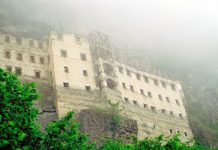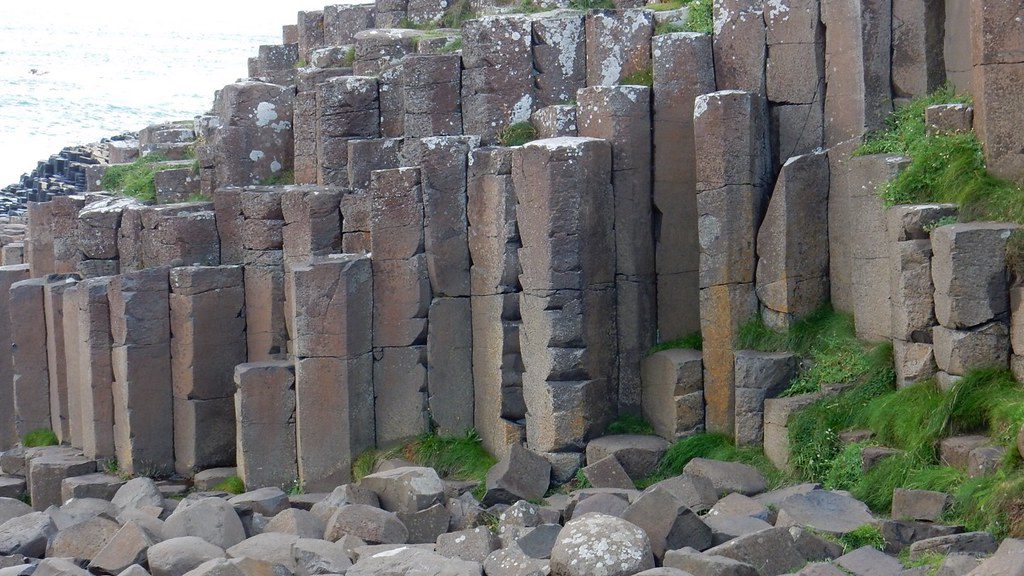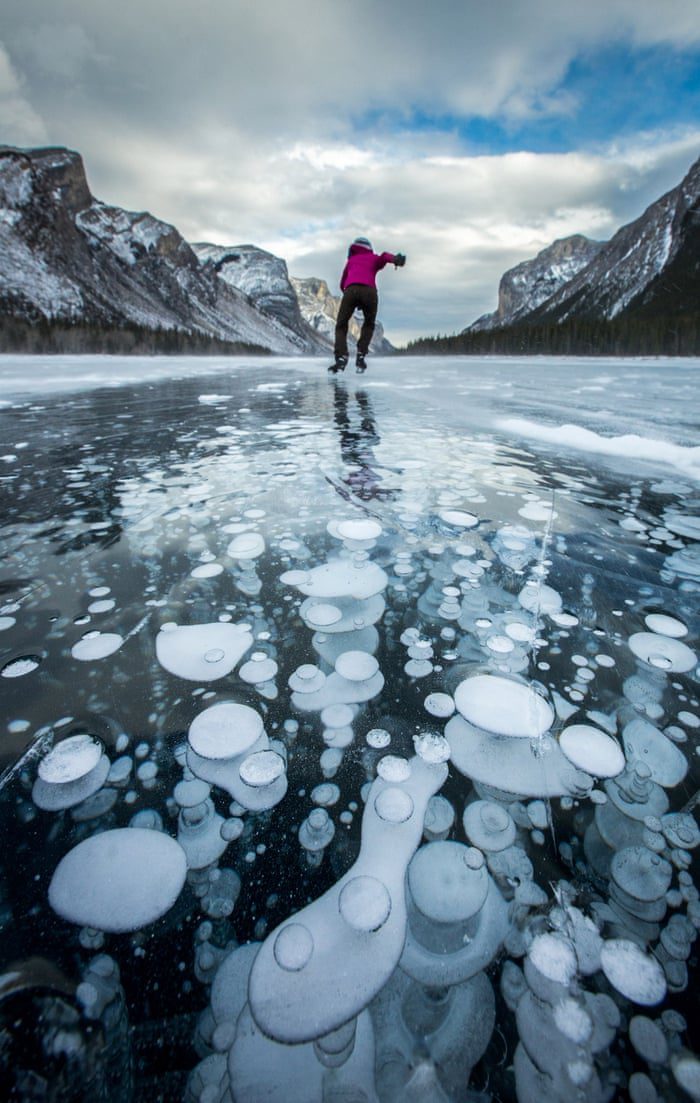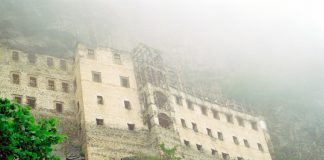The Natural Pools of Pamukkale – Remarkable Features Of Nature
If you want to know how to tour Pamukkale in Turkey, this will be the perfect guide for you. Here we’ll tell you everything you want to know regarding the water pools of Pamukkale. From Pamukkale’s opening hours to where to eat and stay near Pamukkale.
We also describe how to tour Hierapolis and where to stay near Pamukkale and Hierapolis.
Pamukkale is a unique and beautiful area. Pamukkale means “cotton castle” in Turkish, is a natural locality in Denizli in southwestern Turkey. The site is famous for a carbonate mineral left by the running water.
This mineral has created white water pools famous throughout the whole world for their healing properties for thousands of years.
Pamukkale is more than hot pools, and in this guide, we’ll reveal to you about all the great activities you can do there!
Where is Pamukkale?
Pamukkale is tucked away in the foothills of the Denizli Province in southwestern Turkey. It’s positioned about 19 km from the city of Denizli.
It’s placed in Turkey’s Inner Aegean region, in the River Menderes valley. The site has a pleasant temperature for most of the year.
Turkey is a vast country and most people touring the country don’t make it to the hot pools of Pamukkale as it’s located quite far from the country’s capital.
A bit farther into this article, I’ll reveal to you how to get to Pamukkale from Turkey’s biggest and most prominent cities.
Why Should You Visit Pamukkale?
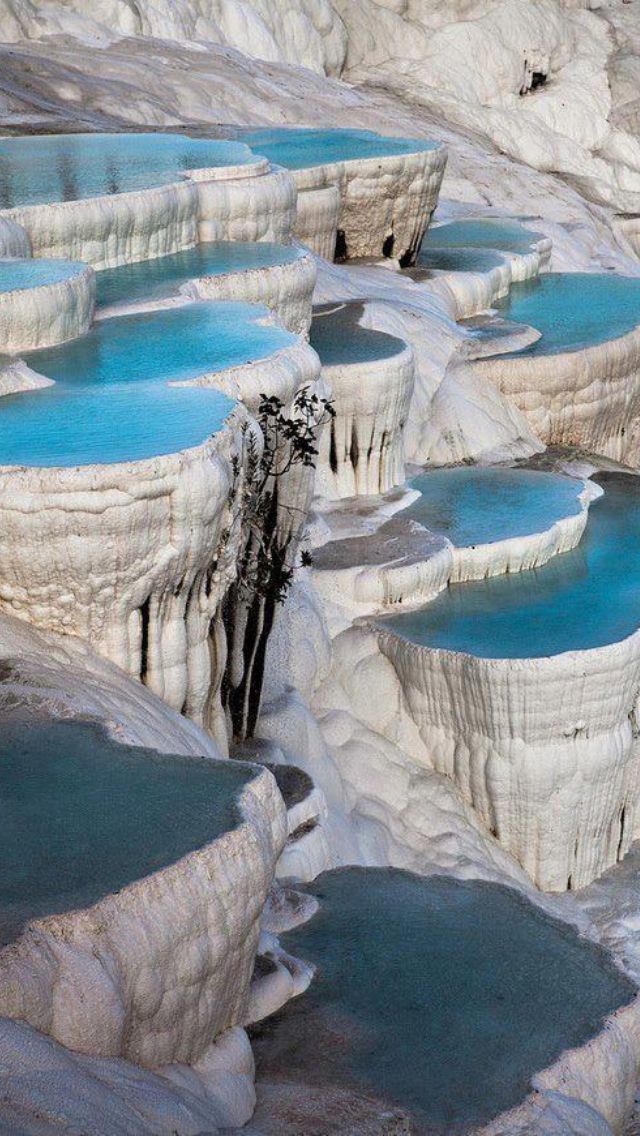
There are so many various reasons why Pamukkale is worth visiting. Firstly, there is so much biblical history and mystery encompassing Pamukkale.
The Legend
During the ages, the hot waters of Pamukkale were forever said to have unusual healing properties.
A legend tells the story of a young ugly girl who existed in a little village near Pamukkale. She was so ugly that nobody desired to be with her. She became so sad and lonely that she wanted to kill herself.
She dived off the highest cascade, but she fell in one of the water pools instead of being crushed to death.
The magical powers of the water wiped away her sorrows, and she became a beautiful girl.
When she rose out of the pool, she met the lord of Denizli, and he was so hypnotised by her beauty that he fell in love with her and invited her to marry him. They lived blissfully ever after.
The Turks maintain that bathing in the pools will heal illnesses such as nutritional and prolonged disorders, digestive and circulatory difficulties, eye and skin conditions, etc. Because of this, Pamukkale has been a thriving spa resort since ancient periods.
Even Cleopatra Washed In the Healing Pools.
Apart from the water’s healing properties, the travertine pools of Pamukkale are enclosed by some impressive ruins and historical sites.
One of these places is the ancient Greek city of Hierapolis, located over the pools.
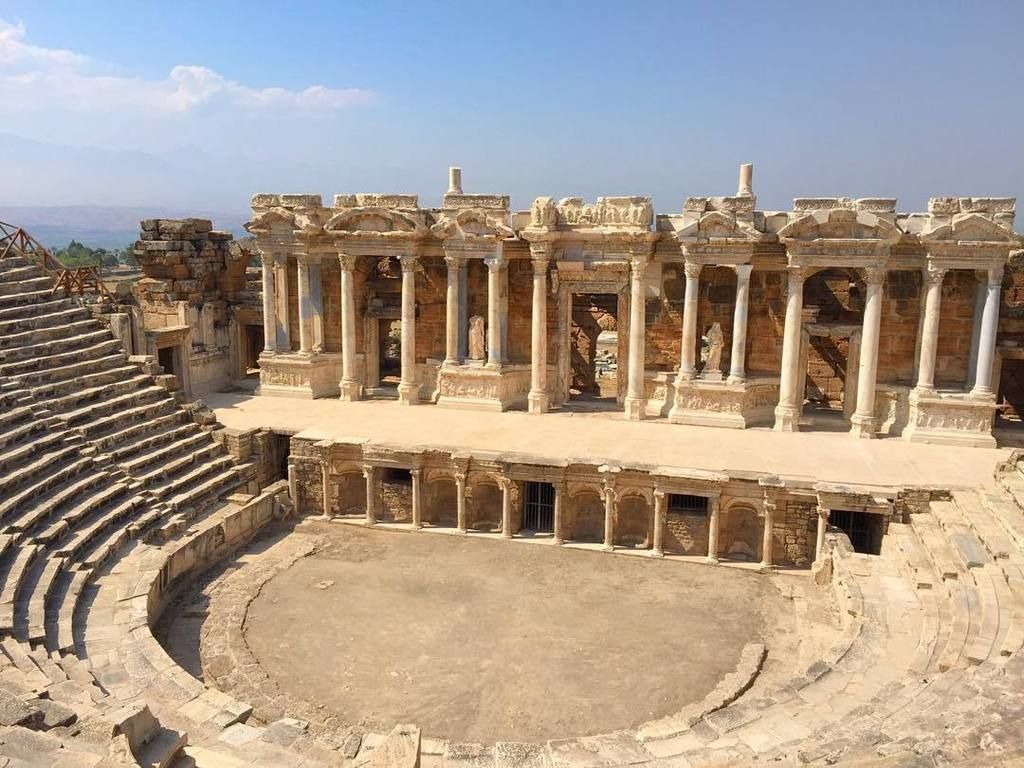

Hierapolis was converted into a spa in the 2nd century BC. It transformed a healing centre where doctors used the thermal springs as a remedy for their patients.
In 17 AD a significant earthquake left the city entirely in ruins. The Romans rebuilt it and added a giant arena. Thousands of people appeared to benefit from the healing water pools.
The city expanded and became very prosperous. But throughout hundreds of years, there were many earthquakes. Eventually, the town never fully recovered and got wholly abandoned around the 14th century.
In the 20th century, tourists rediscovered the ancient city, and the hot springs grew famous again.
The Top Things To Do In Pamukkale
There are quite a few destinations to see, and things do in and around Pamukkale. Here are some of the places and activities you shouldn’t miss:
Bathe Yourself In The Travertine Pools
The one thing you should do when touring Pamukkale is bathing in the dazzling white travertine pools. Those natural rock pools were produced by calcium deposits arising from the area’s hot springs.
These deposits accumulated on the steep slopes of Pamukkale the same way stalactites develop inside of caves. They slowly fanned out into pools over the years.
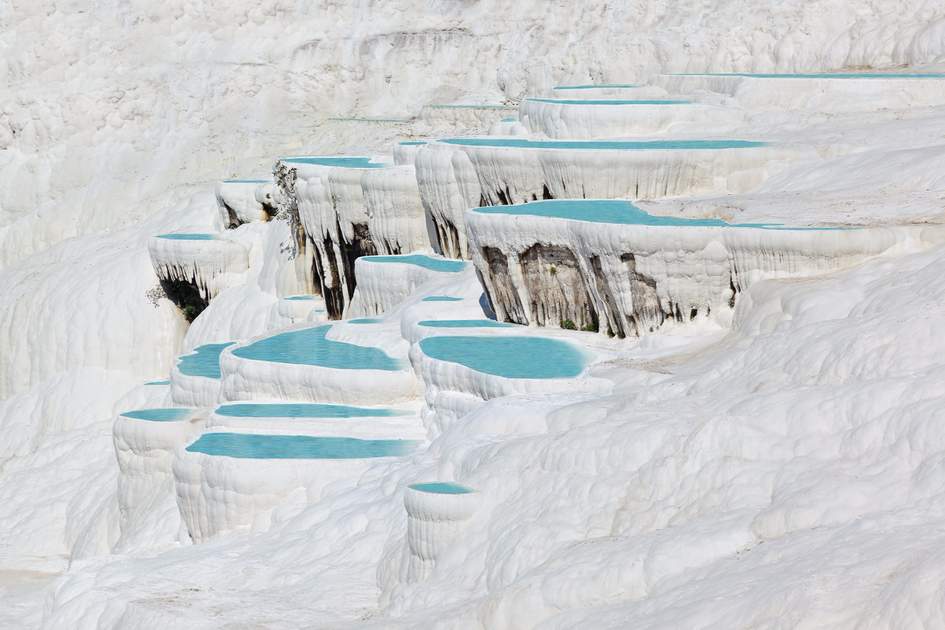
To enter these pools, you must walk (barefoot to not degrade the travertine) all the way from the base entrance of the site to the top part where those small natural baths are positioned.
The pools closer to the summit are the hottest while those near the site’s bottom contain lukewarm water.
Visit The Ruins of Hierapolis
Hierapolis was initially a fortified Greek colony established by King Eumenes II of Pergamon about 190 BC.
While the city began as a military outpost, it was later converted into a spa centre.
The ruins of the centre have gorgeous long roads circled by towering columns. You can walk up through the Pamukkale limestone terraces and enter the Hierapolis ruins near the Antique Pool.
There is a Necropolis in the northerly part of the ruins and Byzantine church at the southerly end.
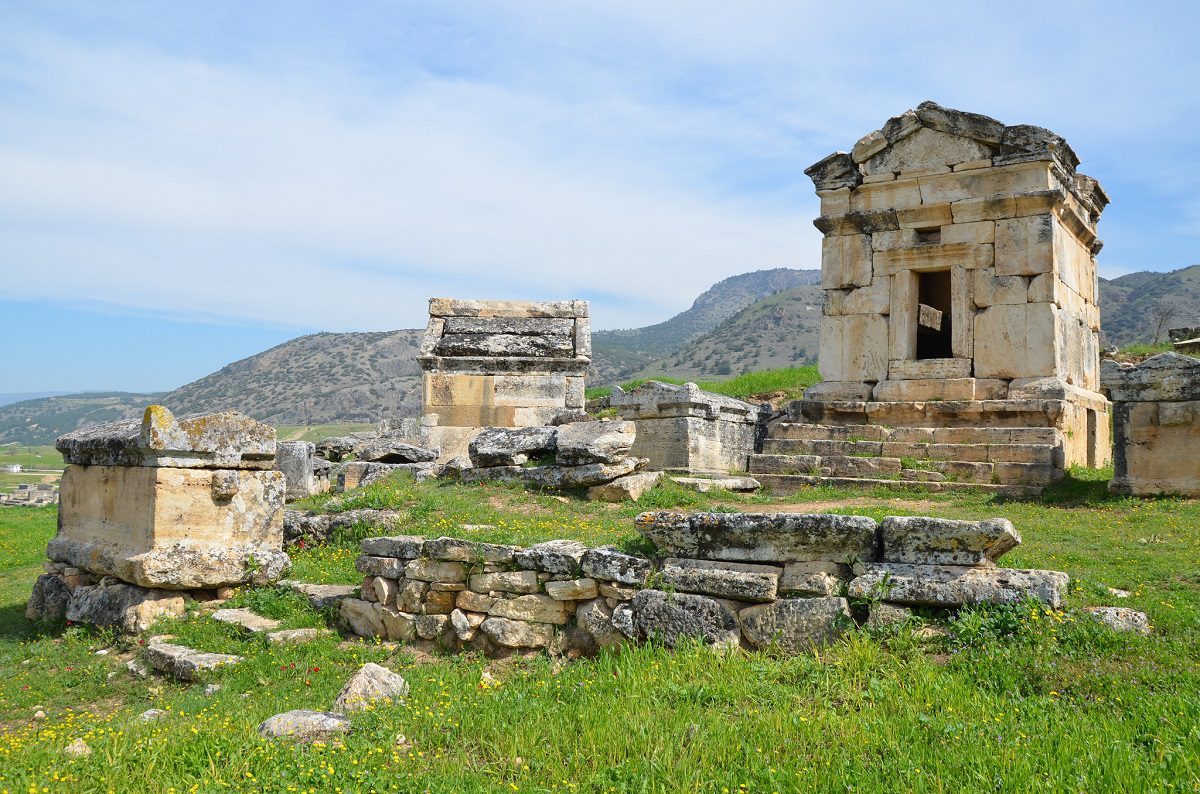
Sit In The Theatre Of Hierapolis
The theatre is the main attraction to view if you tour the ruins of Hierapolis. It stands on top of a foothill and faces the rest of the ancient Greek colony. It needs about 10 minutes to reach the theatre from the entrance of the ruined city.
The theatre is mostly well-kept and preserved much of its original detail. If you go perch on one of the top seats, you’ll have an excellent view of the flawlessly preserved stage.
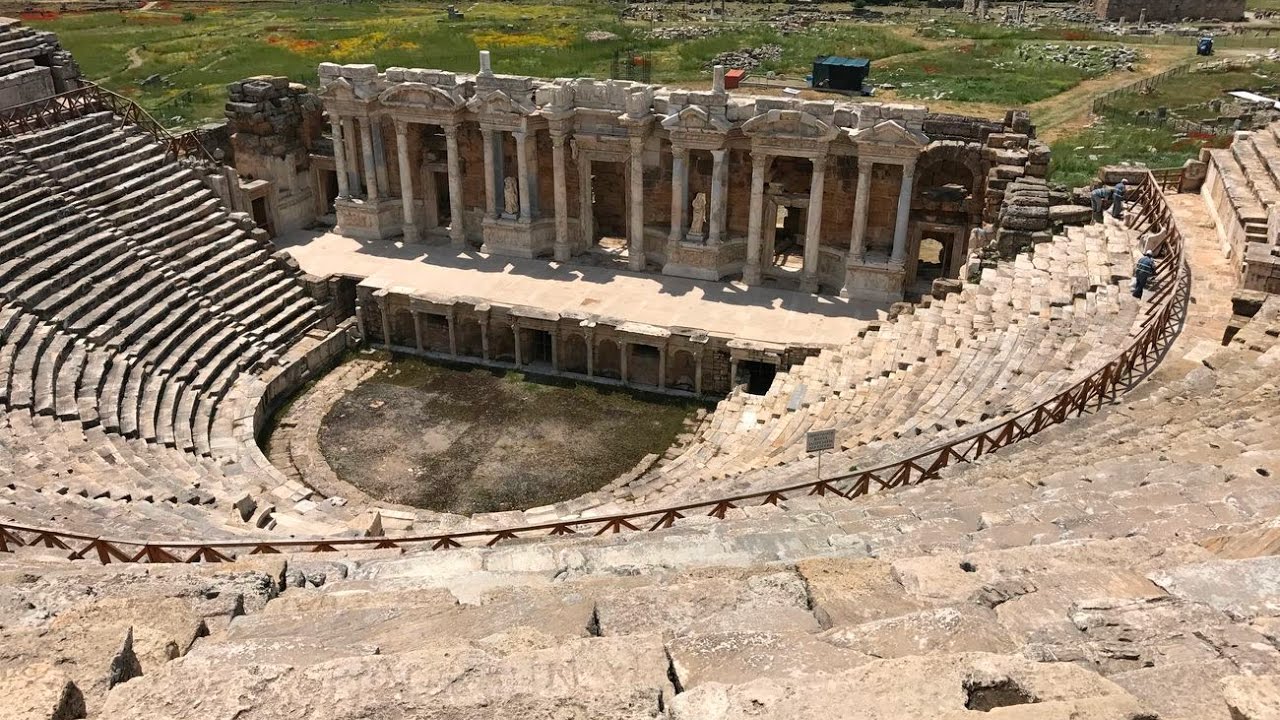
Swim and Bathe In Pammukkales Antique Pool Close To The Temple Of Apollo
There are several more pools worth investigating near the temple of Apollo. Unlike the natural travertine pools, these were etched into the rock by the Romans.
It’s quite an unusual hot-spring encounter, with submerged columns and marble remnants of the temple dispersed in the water. Its an experience you won’t have anywhere else.
You’ll want to pay 50 Lyra to swim in these Roman pools in addition to the 50 Lyra it requires to access the site.
Children under the age of 6 can get in the antique pool for free while kids aged 6 to 12 need to pay 13 Turkish Lira. The pool is only accessible from April to October from 8 AM to 9 PM each day.
There are lockers where you can place your belongings while you soak in the healing waters, but towels are not provided.
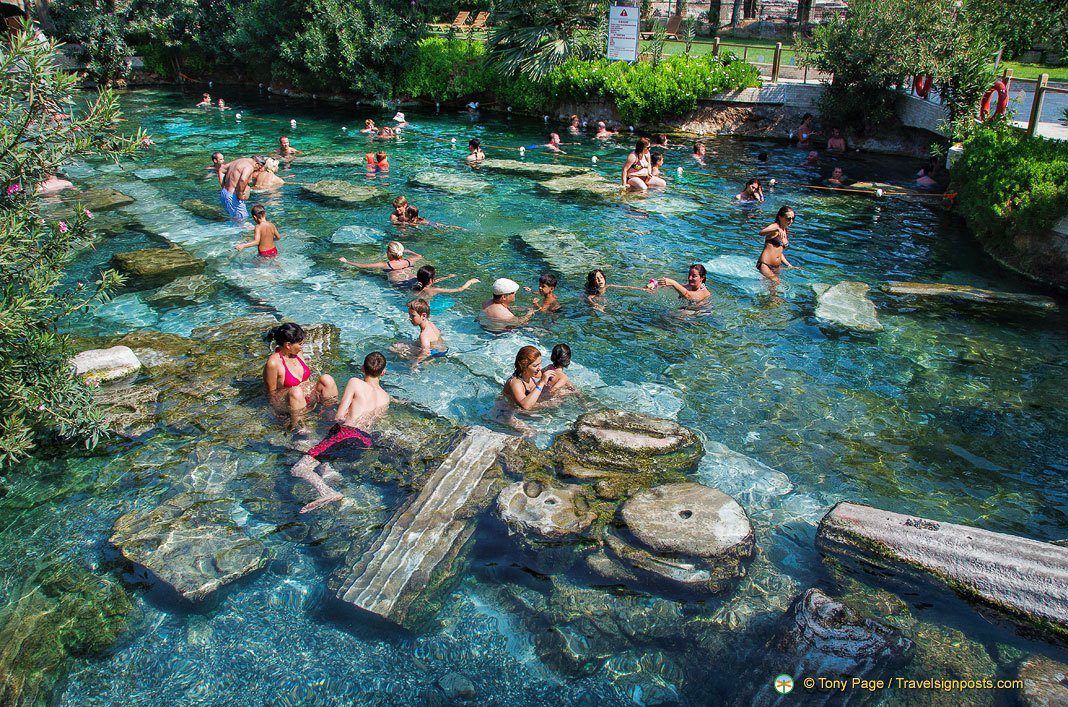
Visit The Museum Of Hierapolis
This small museum has an impressive collection of Hierapolis antiquities and is positioned in a former Roman bathhouse.
Attending the museum will help bring the city of Hierapolis to life. It showcases gorgeous art, stone reliefs, and ancient sarcophagi for which the area was famous. The whole collection of antiquities also comprises sculptures from the nearby locality of Aphrodisias.
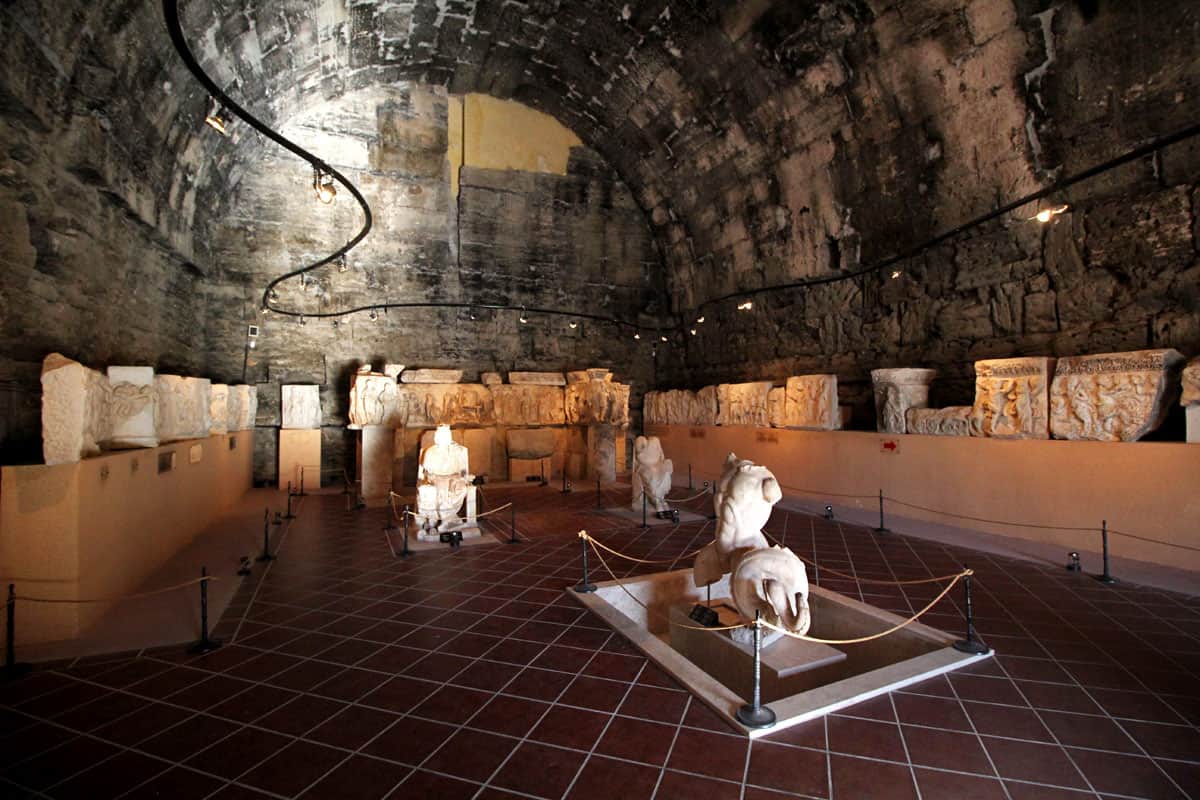
Is It Safe To Visit Pamukkale?
Pamukkale is unquestionably very safe. I would advise walking carefully near the travertine pools though as the white stones can be very slippery.
You’ll have to walk on rocks submerged in running water, and there are also sharp-edged pieces of limestone in some areas. The same goes for touring the ruins of Hierapolis. Some of the rock bricks have freed up over time so tread thoroughly!
If you’re questioning if it’s safe to wear a swimsuit in Pamukkale, don’t despair. Turkey is still quite open-minded when related to nearby middle-eastern countries. Or at least it is when it comes to the larger tourist parts of the country.
Another thing I would suggest is to bring a reliable pair of sunglasses. The white limestone is so intense during the day that the glare may hurt your eyes if you don’t guard them.
Pamukkale Opening Hours and Costs
With a ticket for Pamukkale, can tour the site for the whole day. The ticket covers both the entrance to the hot springs and to the ruins of Hierapolis. Tickets to visit Pamukkale and Hierapolis required 60 Lyra.
Opening hours are between 06:30 to 21:00 in the summer.
You could also purchase an All Turkish Museum Pass that includes the permit to enter Pamukkale as well. The pass costs 375 Lyra, but it’s worth it since it consists of the visit of more than 300 museums and archaeological sites over Turkey.
This Turkish Museum Pass also enables you to bypass the Pamukkale entrance line.
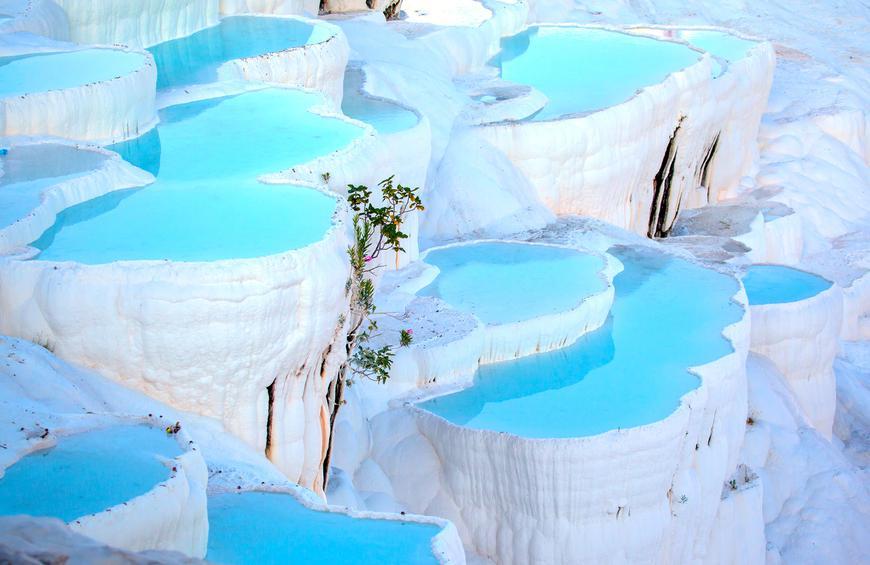
What’s The Best Time To Visit Pamukkale?
The best season to visit or tour Pamukkale is Spring. The climate there is ordinarily quite comfortable in April and June. A lot of flowers will be thriving around the site.
Fall, from September to October is also an excellent time to visit Pamukkale. Still, that time of the year can be a bit drizzly.
I wouldn’t suggest visiting Pamukkale in winter because you’ll be freezing when you’ll get out of the springs, not to mention the sporadic snowfalls.
Where To Stay Near Pamukkale
While most people favour staying in Denizli and taking a bus to Pamukkale, we think it’s more reliable to stay in a hotel near the hot springs. By staying right in the town of Pamukkale, you’ll be able to visit the site before it’s packed with tourists.
Here are three hotels found in the town of Pamukkale within a walking length of the travertine pools:
Sinter Terasse House Hotel
This is our favourite hotel in Pamukkale. The hotel rooms are cosy and peaceful. What can make you fall in love with this hotel is the personal care and attention provided by the staff and the place’s owner.
The manager, Sami, is very kind and courteous and gives some great information regarding what to see in town.
Ozturk Hotel
This family-owned hotel is close to the travertine pools of Pamukkale. The rooms are quite comfortable, but they still have a very affordable price.
The beds are incredibly comfortable, the rooms all have huge windows and hammam-like baths. You’ll get outstanding value for your money in this hotel.
Ozturk Hotel
It has a super large pool where you can unwind after spending a day touring Hierapolis. They also serve a great breakfast.
Ozbay Hotel
The rooms of Ozbay hotel are huge, neat and full of light.
This establishment is nearby to Hierapolis and Pamukkale. From some of the rooms, it’s even likely to see the water-filled travertine pools.
The hotel offers excellent breakfast options, and some excellent restaurants are located nearby.
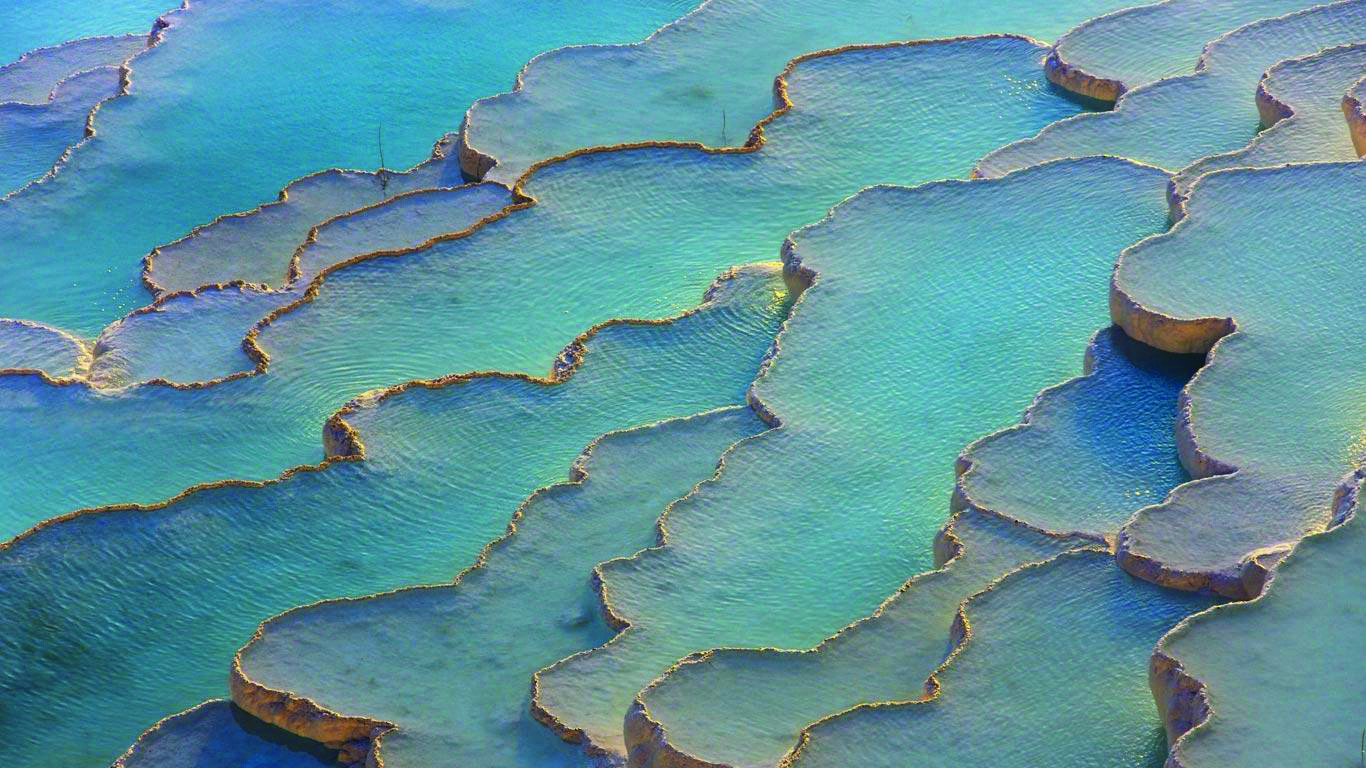
Where To Eat Near Pamukkale
Pamukkale has some fabulous restaurants where you’ll be able to taste some of the best Turkish dishes. Here are a few favourites:
Kayas Restaurant & Bar
This elegant restaurant in Pamukkale has a great range of beers and fantastic dishes! The eggplant served with meat is especially delicious, and the fried chicken comes out sizzling with a live-fire beneath it.
Teras restaurant
This restaurant has some great Gozleme and meat Kebabs. The meat served in the dishes is incredibly tender.
From Teras restaurant, you’ll get a nice view of the white hot-springs. The courteousness of the staff and the incredible service are what makes this hotel a good one.
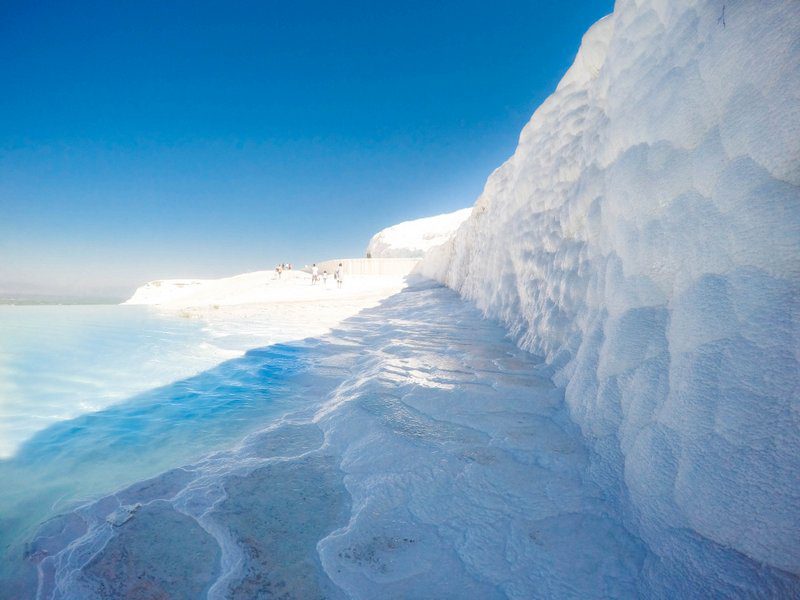
White House Restaurant & Cafe
At this restaurant, you’ll be welcomed like family as you walk through the door. As soon as you enter the cafe, you’ll see how beautiful the place is.
The interior of the restaurant is gorgeously furnished with shades of white and blue to reflect the hot-springs.
Here you can taste some great Turkish dishes as well as some Mediterranean specialities. The dishes range from delightful Turkish pides, Greek salads, hummus, and bread to vegetarian pasta and seasoned chicken curries.
Everything is freshly prepared and beautifully arranged on white platters. The servers are friendly, and some speak decent English. The restaurant has large windows overlooking the street.
How To Get To Pamukkale
Since Pamukkale is one of Turkey’s major touristic sites, it’s readily accessed from other cities and towns throughout the country. Most big cities and towns in Turkey have buses that go to Denizli the closest city to Pamukkale.
How To Get To Pamukkale From Denizli
If you start your adventure in Denizli, it will be straightforward to get from there to Pamukkale. Denizli is just 16 km from the hot springs. It’s possible to move amongst the two cities by bus or by taxi.
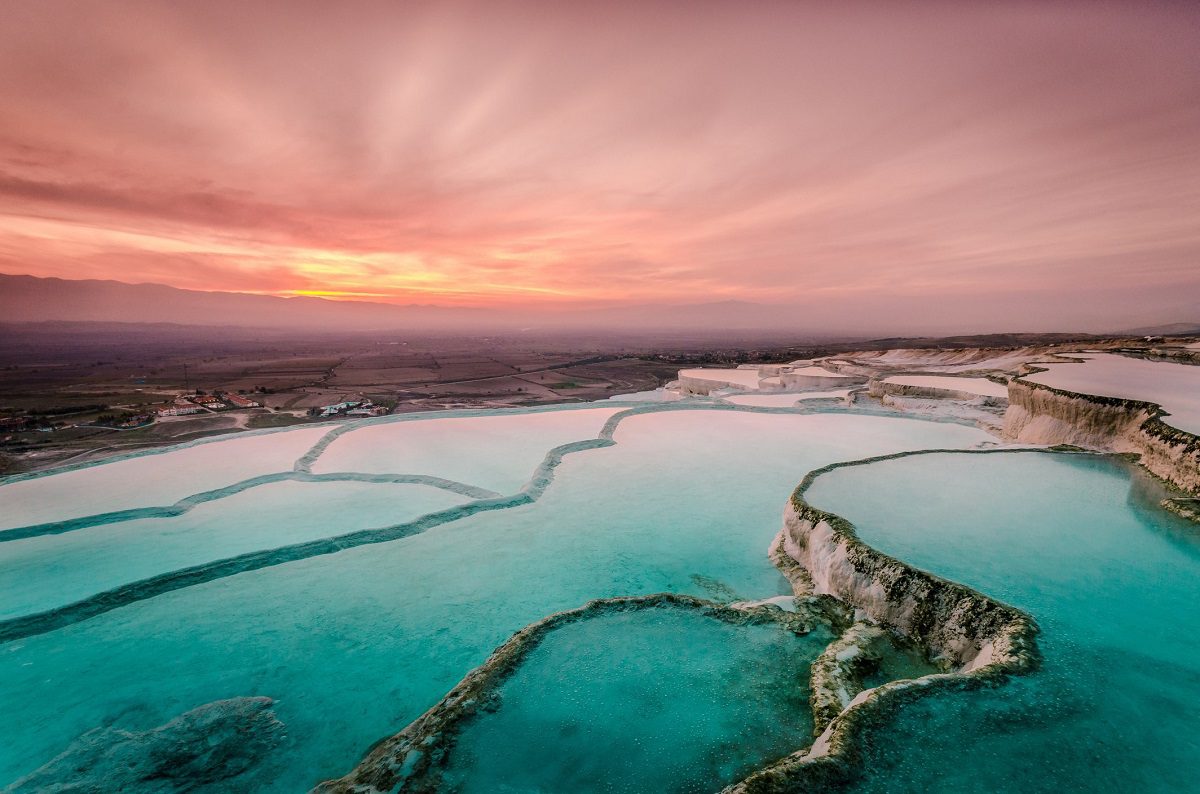
Get to Pamukkale from Denizli by bus.
To get a bus from Denizli to Pamukkale, you’ll have to go first to Denizli Otogar Bus Station. This is where the bus terminal is located in Denizli:
The bus to Pamukkale departs from platform 76. Suppose you’re planning on coming back to Denizli after the day. In that case, you should confirm the return time of the minibus with the driver and where precisely in Pamukkale, you can catch the bus back.
Suppose you want to start your visit by walking around the ruins of Hierapolis before visiting the travertine pools.
In that case, you can ask your driver to drop you off at the northern entrance near the ancient city. The Northern access is called “Örenyeri Kuzey Giriş” in Turkish. Taking a bus from Denizli to Pamukkale will cost about 5 Lyra per person.
Get to Pamukkale from Denizli by taxi.
A taxi ride from Denizli to Pamukkale will cost about 50 Lyra per person, and the ride takes about 20 minutes.
Get to Pamukkale from Denizli in your own car.
Suppose you have your own vehicle or renting one. In that case, it will be straightforward to reach Pamukkale from Denizli, and you’ll see some lovely landscapes along the way.
To get there, you’ll have to stay on Pamukkale Boulevard (highway E87) towards the North for 16 km until you approach the small town.
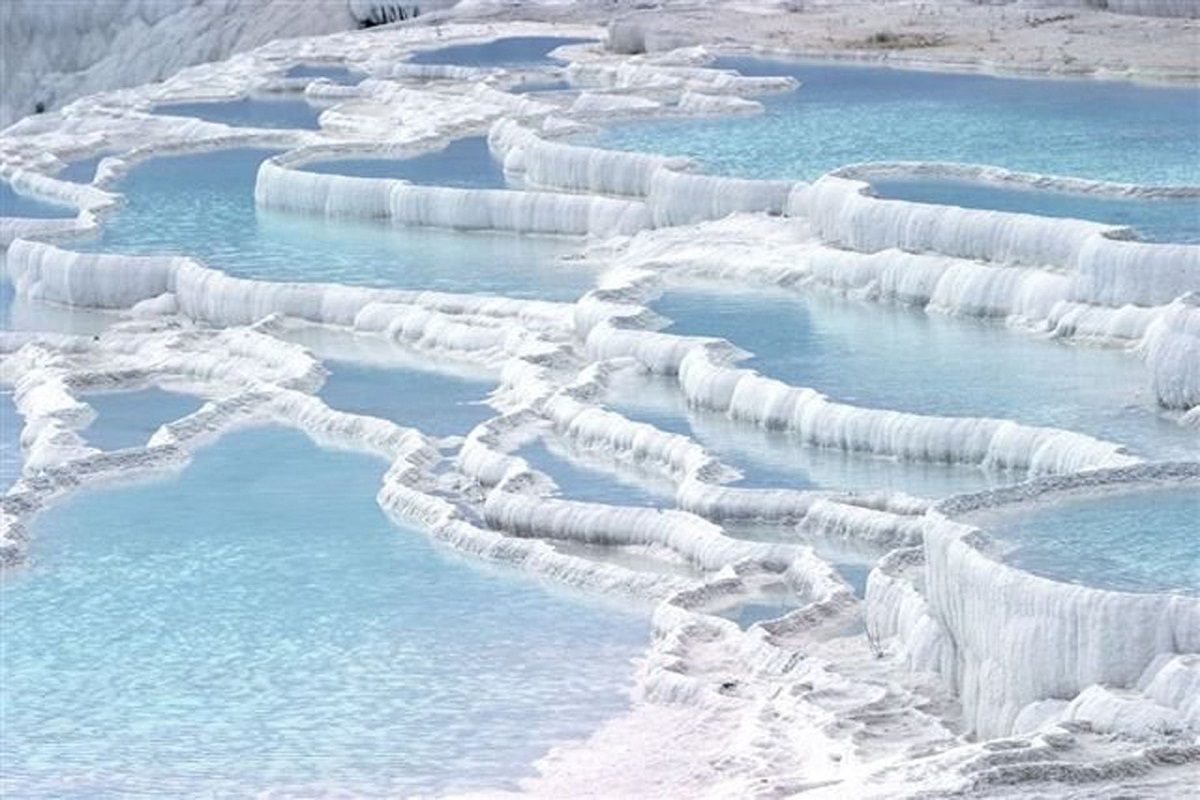
How To Get To Pamukkale From Istanbul
Istanbul is another very tourist destination in Turkey. Travellers often tour Pamukkale right after spending time in Istanbul.
Flights between Istanbul and Pamukkale
Since Turkey’s internal flights are incredibly affordable, the best way to travel among the two locations is to take a plane from Istanbul to Denizli airport. From Denizli, it’s straightforward to hop into a taxi or a bus to reach Pamukkale. Flights connecting Istanbul and Denizli are generally about an hour long.
Buses between Istanbul and Pamukkale
If you want to move from Istanbul to Pamukkale by bus, you’ll first have to go to the central bus station and purchase a ticket from Istanbul to Denizli.
A bus ticket to travel connecting the two cities costs around 80 Lyra and the ride should take approximately 7 to 8 hours. Once in Denizli, you get a taxi or a bus to Pamukkale.
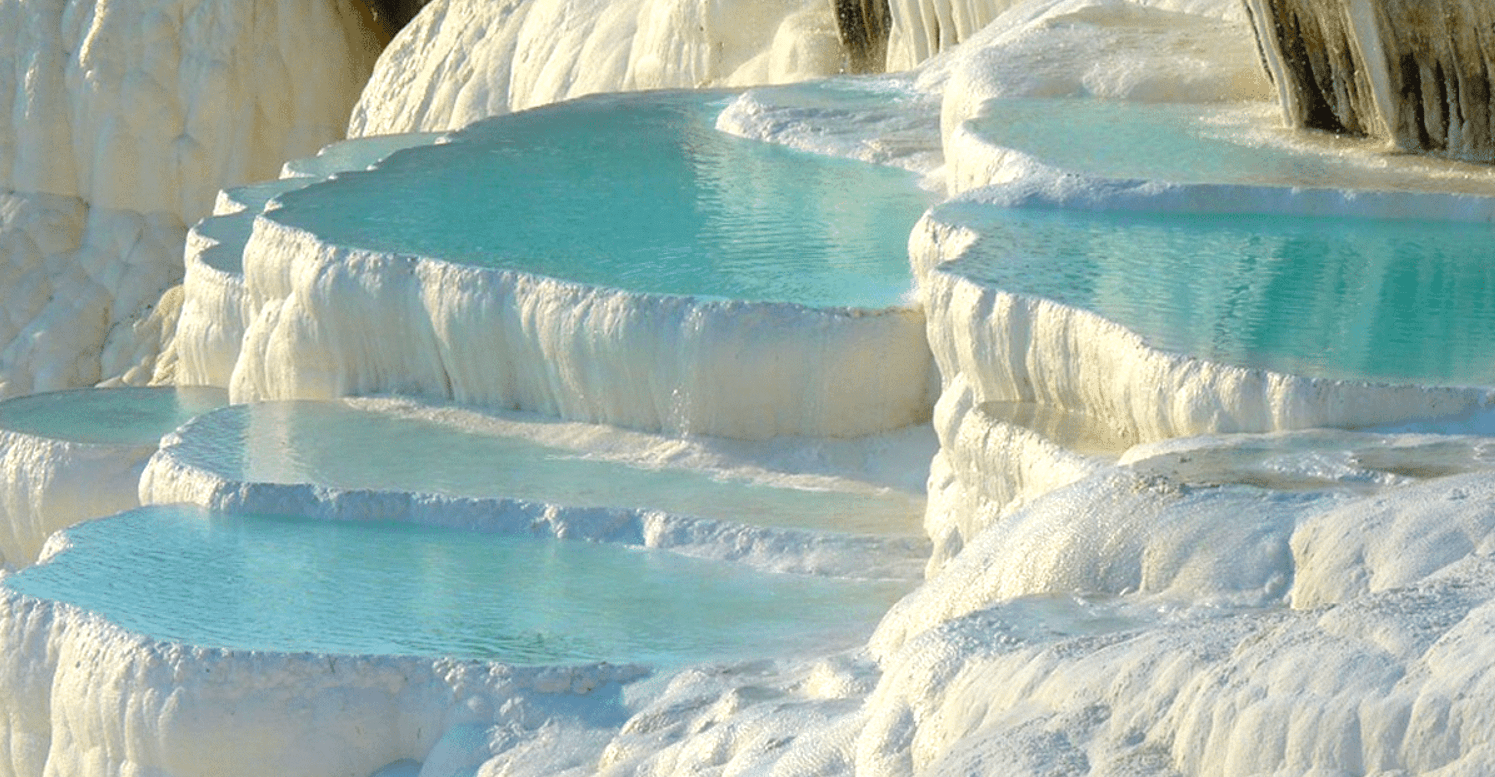
How To get to Pamukkale From Cappadocia
Cappadocia is considerably far from Pamukkale but travelling between the two destinations is not very difficult. From Cappadocia, you’ll first have to arrive at Goreme.
This town is about 57 km from Cappadocia, you’ll be able to take a night bus to Denizli (Pamukkale). The journey takes around 8 hours.
If you travel in Turkey through the high season, it’s better to buy your ticket a day before to be sure you’ll get a seat on the bus. You can purchase your ticket at the Goreme otogar.






































